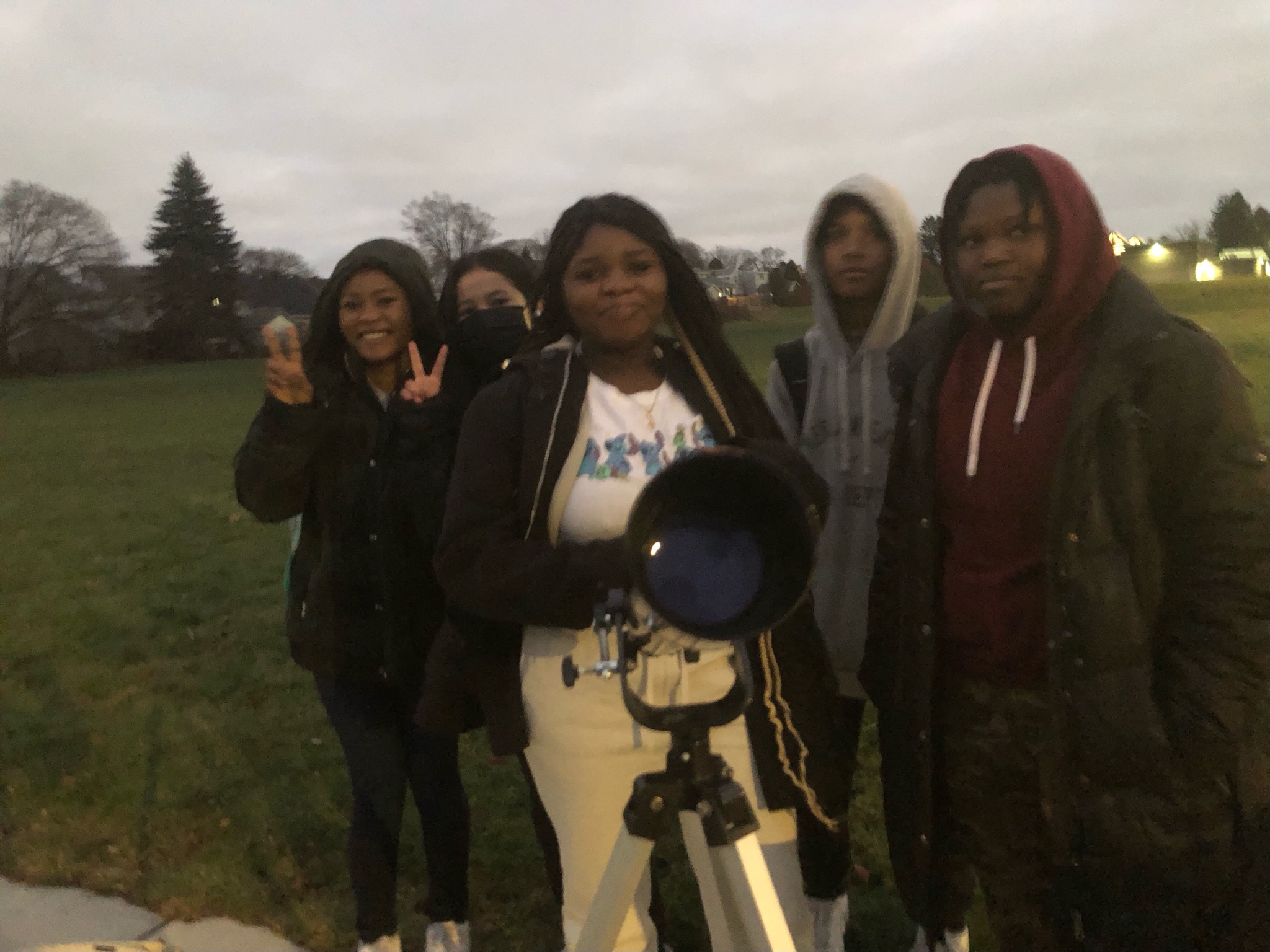Grant Students Engaged in Out of This World Science Activity
 Helene Sahiriza isn’t a morning person. Yet one morning this winter, she and her sister set their alarms and together, made the cold, dark, 30 minute walk to their school, arriving before 7 am.
Helene Sahiriza isn’t a morning person. Yet one morning this winter, she and her sister set their alarms and together, made the cold, dark, 30 minute walk to their school, arriving before 7 am.“Wow… I can see the craters on the moon!”
“I’ve never seen this with my own eyes before!”
Helene, her sister, and a group of Grant Middle School students gathered outside their school building. Huddled together with their Science teacher, Eliseo Trujillo, they received a private astronomy lesson, peering through a telescope while examining the solar system.
“I’ve been teaching them about telescopes and magnification,” Mr. Trujillo explained. “I wanted to offer an extra activity where they could look at the stars themselves. Some of them have never used a telescope before, so this was a good introduction to allow them to practice.”
Mr. Trujillo is a scientist by trade – he earned his Ph.D. in Plant Science and worked as a scientist before moving to Syracuse five years ago, where he entered the field of education as a middle school Science teacher.
“I enjoy what I do, and I want to share that excitement with my students,” Mr. Trujillo said. “Finding the moon is a good introduction for my students, who are new to this. The telescope instruments are very sensitive – you have to be very precise. There is a red light tool that you use to align things and find an object, so they were able to practice by finding the moon and viewing the craters. The next level of difficulty is finding stars and constellations. You can actually see Jupiter and the moons of Jupiter – they’re just hard to find when you’re not familiar with the equipment!”
Mr. Trujillo first offered the opportunity for students to join him for morning stargazing in October – when students had to arrive to school at 6:15 am in order to experience the darkness necessary for the activity. A few showed up – several overslept. So he offered another opportunity in December, when the shorter daylight hours allowed a later 7 am start time.
Mr. Trujillo said the students were surprised at how clearly they could see things through the telescope.
“These are things our students see in books, or they see the moon with their eyes,” he said. “But when you use a telescope and you see it up close, in detail, with your own two eyes, it becomes more real – more exciting.”
“I was hoping to see the moon and what it looks like up close,” Helene explained of what motivated her to make the early morning trek to school. “I was able to see it so clearly! It was grey and the craters on it almost looked shiny. But we also saw Jupiter, that was kind of Milky-Way looking with orange and white; and Mars… which was red and orange. It was just so cool!”
Mr. Trujillo explained that on a cloudy day, as it turned out to be in December, he came with a Plan B: a phone app that, when held up to the dark sky, illuminates which constellations are among the stars.
“I didn’t know about constellations before,” Helene said. “I heard about the astrological signs, but I didn’t know that you can connect the stars to see those patterns! We saw the crab – Cancer, the goat-fish – Capricorn, and the scorpion – Scorpio. It made me so interested in astronomy because I didn’t know anything about it at first, but it was so fun. I love hearing the ‘why’ of things and how things like the constellations were created!”
In addition to the unique stargazing activities, Mr. Trujillo is exposing his students to other innovative science lessons as well. With his background in plant science, he has experience researching how to grow plants in different places – including in space! He’s even brought a challenge to the robotics students he teaches after school: how can we harvest plants in different spaces – right here in Syracuse? His students have helped design a robot that is currently helping the group grow plants on the school’s roof – they use a drone they have programmed to drop fertilizer on the plants!
Way to go, Grant scholars – and thank you, Mr. Trujillo, for making STEM learning so exciting for your students!


